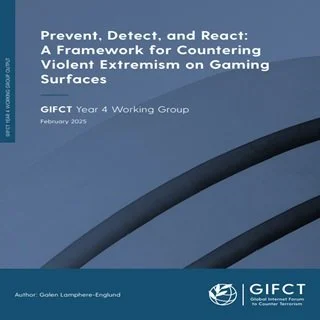By Noémie Bouhana | Caitlin Clemmow | With contributions from Philip Doherty
Post 9/11, research on radicalisation and involvement in terrorism and violent extremism (henceforth, ITVE) has focussed on the role of individual-level attributes, such as the psychological characteristics, socio-economic background, demographic features, experiences, beliefs, past behaviours and criminality, and the social embeddedness of radicalised individuals and people involved in acts of terrorism (Borum, 2011; Stern, 2016; McCauley & Moskalenko, 2017; Sageman, 2008; Wiktorowicz, 2005). Likewise, existing processes, methods and tools to identify and evaluate the risk of ITVE operate largely at the individual level. The Vulnerability Assessment Framework (VAF) used in the context of Channel is the best example of this. Comparatively less attention has been devoted to identifying and evaluating the characteristics of the socio-physical contexts which may contribute to the emergence of the risk of ITVE, or, conversely, to its suppression. Yet research on crime, arguably a closely related problem space, makes a strong case that many of the causes and enabling conditions of criminal development (of which ITVE is an instantiation) are found in the environment: crime and criminals concentrate in space and time. Modifying the environment in which crime occurs and the specific settings in which criminals develop and act has been shown at length to be an effective approach to crime prevention and disruption (Weisburd et al., 2012). In crime prevention, as in other areas of behavioural change, one size does not fit all: to design effective programs, the ability to tailor interventions to the socio-physical context is paramount, which means that the effect of key contextual features on the outcome of interest must be understood (Sampson et al., 2013); notably, the effect of exposing (susceptible) individuals with particular kinds of characteristics to (criminogenic) places with particular kinds of features. Situational Action Theory [SAT] is a theory of crime causation, which, as its name suggests, puts context at the centre of the explanation of crime (P.- O. H. Wikström et al., 2009). In 2010, ahead of the revision of the Prevent Strategy, the UK Home Office commissioned a Rapid Evidence Assessment of the cause of al-Qaeda-influenced radicalisation seen through the lens of SAT (Bouhana & Wikström, 2011), which identified the key levels of analysis in a causal model of radicalisation as relating to individual vulnerability to radicalising influence, exposure to radicalising settings, and the mechanisms of emergence of said settings. In the decade since, this theoretical model has been refined and now underpins a research programme concerned chiefly with going beyond "who" and "why" to the "where" of terrorism involvement. It has inspired, notably, the EU FP7-funded international PRIME project on lone actor terrorism, which, among other findings, has shown that individual-level risk indicators are multifinal (i.e., their meaning determined by the context in which they arise), and has provided support for a formulation of individual vulnerability which encompasses susceptibility to exposure to radicalising settings, as well as cognitive susceptibility to moral change with significant implications for prevention efforts (Corner et al., 2018). It has also produced evidence for distinct configurations of individual/ context interaction patterns leading to the emergence of lone actor risk, with further implications for risk assessment (Clemmow et al., 2019). To better support policy strategy and counter-terrorism practice, the theoretical SAT model of radicalisation was reformulated and expanded into a risk analysis framework for lone actor terrorism [PRIME RAF] (Bouhana et al., 2016, 2018) and a systemic inference framework to inform counter-extremism strategies [S5], commissioned by the UK Counter-Extremism Commission (Bouhana, 2019). Both of these integrate SAT with the broader behavioural and socio-cognitive knowledge-base to refine our understanding of personenvironment interaction. While the RAF is concerned specifically with the effect of situational interaction on the motivation and capability of lone actors to act (behaviour), S5 is more broadly focused on explaining the acquisition of extremist propensities (beliefs). Both frameworks are analytically related and can be logically integrated. However, these remain general frameworks. Inherent in their interactionist logic is the fact that, while environmental processes of risk can be set out in generic terms, specific risk (or protective) factors and – crucially – their observable indicators must be elicited with regards to a particular context. This is because indicators are subject to change over space and time (P. O. H. Wikström & Bouhana, 2017) and because risk assessment is most effective when calibrated to context (Hamilton et al., 2021). A recently completed, Home Office-funded project guided by S5 (State of the Union [SOTU]; Bouhana and Schumann, 2021), which aimed to assess the observability of key analytical concepts of mainstream models of terrorism involvement, demonstrated the difficulty, yet also the necessity of translating said concepts into observable indicators, inasmuch as any model is intended to guide risk assessment or intervention design and evaluation. It also suggested that environmental indicators may be more reliably observed than susceptibility-related indicators using commonly available sources of information, and it tentatively provided further support for the notion that susceptibility and exposure interact in specific ways, leading to the emergence of risk. This project investigated the feasibility of developing a framework to assess the risk of involvement in terrorism and violent extremism at the level of place, with a view towards – further down the line – designing an assessment tool along the lines of the Vulnerability Assessment Framework, intended to assess environments instead of individuals. As a first step towards establishing this feasibility, this project investigated whether the mechanisms articulated in the S5 framework could be operationalised; in other words, to what extent they could be associated with a set of observable indicators relevant to the UK ITVE context. Given the relative scarcity of empirical research into the characteristics of extremist social ecologies and settings in the UK (and largely elsewhere) – which would be prerequisite to the conduct of a systematic review – the researchers elected to carry out an e-Delphi exercise with U.K. Prevent practitioners, the results of which are presented at length in this report.
London: CREST - Centre for Research and Evidence in Security Threats (CREST), 2025. 50p.





















